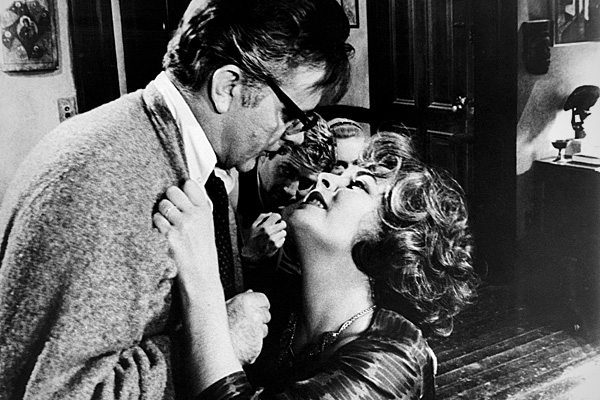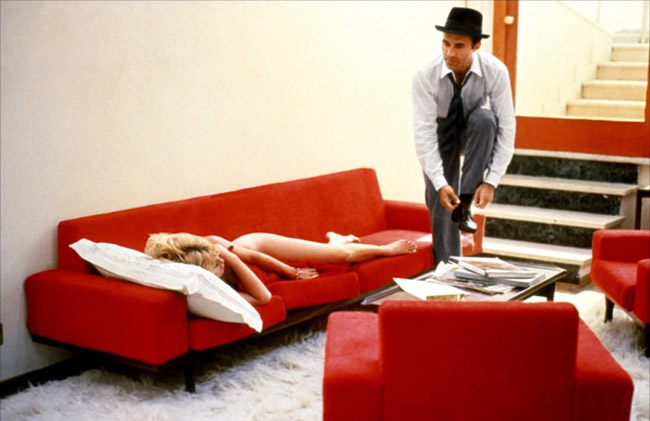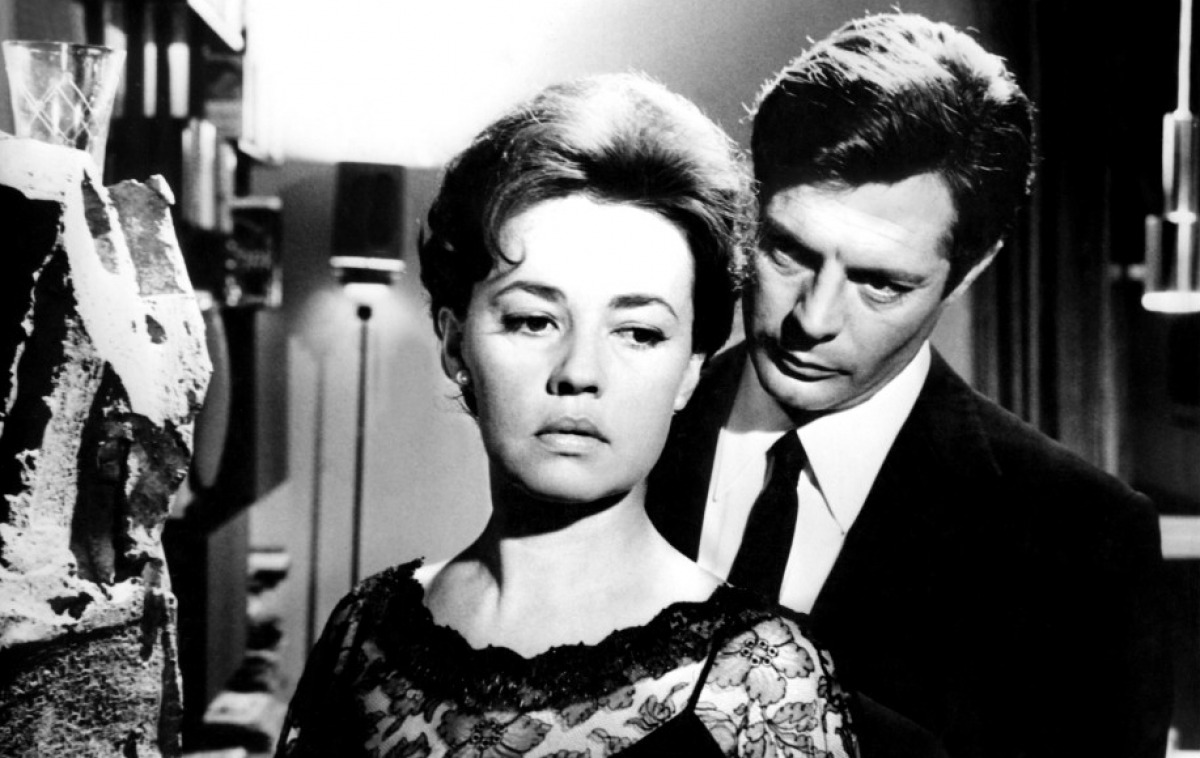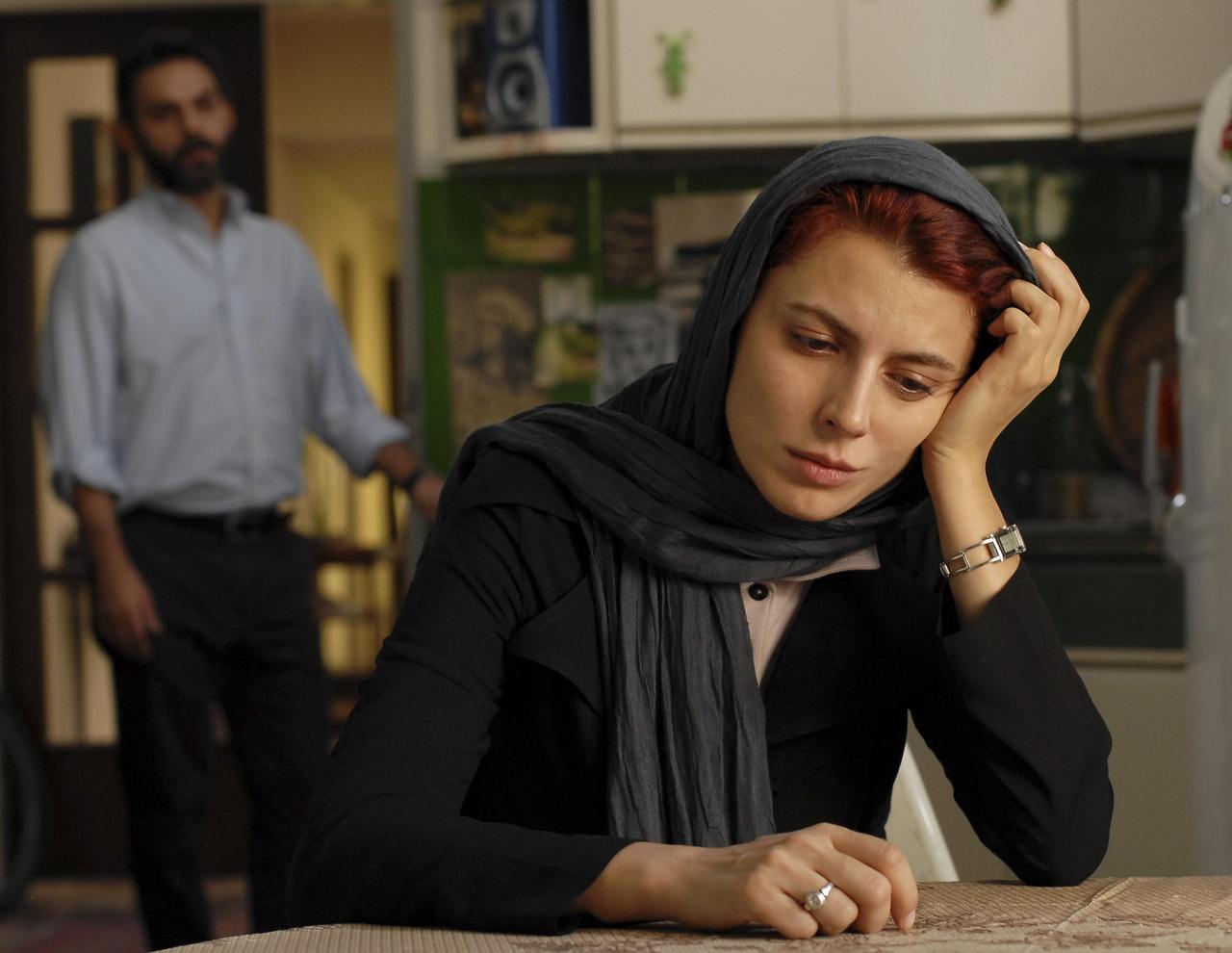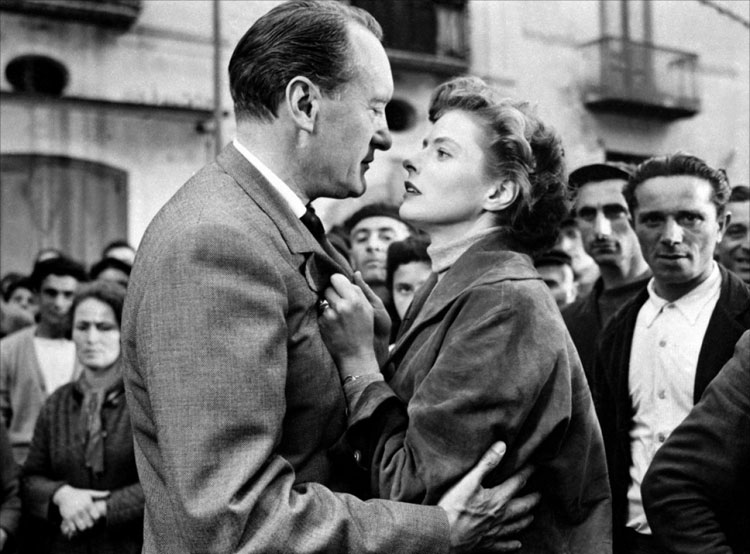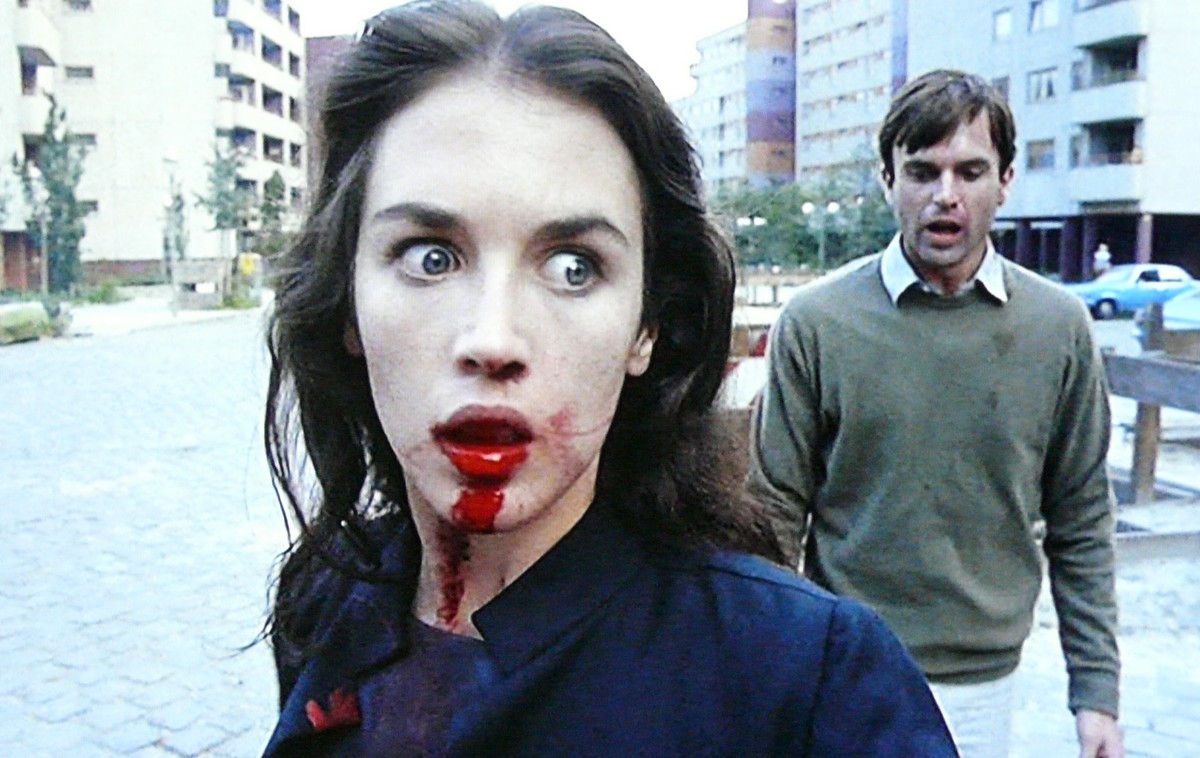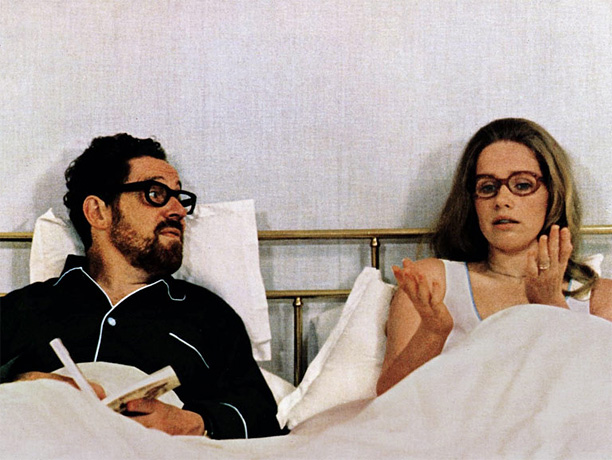7. Who’s Afraid of Virginia Woolf? (Dir. Mike Nichols, 1966)
Years of bitterness and acrimony have bubbled over in the marriage of George (Richard Burton) and Martha (Elizabeth Taylor, in her Oscar-winning role), who have decided to host a newly married couple, Nick (George Segal) and Honey (Sandy Dennis, who also won an Oscar). Their night devolves into a sparring match of violent outbursts, verbal attacks, drunken states, and repressed emotions.
Mike Nichols crafts a portrait of two abusive people who cope with their marital problems by drinking and telling jokes at the expense of one another. Taylor and Burton shine in their roles (perhaps borrowing elements from their own troubled marriage). Though the film adaptation is a tad watered down from the original play, it still provides an intriguing perspective of the psychosexual games these characters play, including inventing an entire storyline about a son.
6. Le mépris (Dir. Jean-Luc Godard, 1963)
Hired to write a script for Fritz Lang (played by himself), Paul (Michel Piccoli) tries to balance the demands of a crazed American producer (Jack Palance) with those of his doting wife, Camille (Brigitte Bardot). When Paul (un)intentionally (it is ambiguous what his motives were) pawns his wife onto the American producer, Camille’s love for Paul turns into bitter hatred.
Godard’s self-reflexive ode to cinema is a tragic portrait of marriage on the brink of disaster. The marriage not only reflects an existential interpretation of Homer’s The Odyssey, but it also mirrors Godard’s own marital problems with Anna Karina. The disjointed narrative never truly provides the answers for the dissolution of the marriage, but it creates a nuanced portrait of the growing contempt that will split the union apart.
5. La Notte (Dir. Michelangelo Antonioni, 1961)
Though estranged from one another, Giovanni (Marcello Mastroianni) and his wife, Lidia (Jeanne Moreau), attend a bourgeois party in celebration of Giovanni’s success as a writer. What transpires is one of the bleakest parties imagined, and every single character is on the brink of a mid/quarter life crisis.
Antonioni’s follow up to L’Avventura retains the theme of bourgeois characters on the verge of alienation and disappearance. Though Giovanni and Lidia no longer have emotional ties to one another, they continue their union out of some bourgeois ritual in order to present a façade of happiness. The ending is a haunting confrontation in which Lidia admits that they should end their marriage, but Giovanni – unable to grapple with reality – overtakes Lidia. The camera pans to an empty field and the film ends.
4. Jodaie Nader az Simin (Dir. Asghar Fahardi, 2011)
Fahardi’s Jadaie Nader az Simin (A Separation) is brilliant because it examines a separation through an all-encompassing lens. The film follows the separation of Nader (Peyman Moaadi) and Simin (Leila Hatami), which results from cultural practices that won’t allow Simin to leave the country without her husband’s consent.
The film also tracks a bitter feud that involves Nader’s alleged murder of an unborn child. The film’s political implications are masked by domestic drama, transposing overt radicalism into a subtextual narrative fabric.
3. Viaggio in Italia (Dir. Roberto Rossellini, 1954)
Katherine (Ingrid Bergman) and Alex (George Sanders) are an English couple who travel to Naples in order to sell their property. Along their trip, the couple realizes that their alienation and jealousy may be a sign of an impending marital rupture.
Many consider Rossellini’s Viaggio in Italia (Voyage to Italy, sometimes translated as Journey to Italy) to be one of the first modern films (although the climactic ending is more classical than modern). Rossellini chronicles the couple’s break-up through their environment, even juxtaposing their alienation with classical artwork and Pompeii’s fossilized ruins. The landscape becomes a reflection of their emotional states, and the joyous religious parades in Naples help rekindle their romance.
2. Possession (Dir. Andrzej Zulawski, 1980)
Mark (Sam Neill) returns home to his wife, Anna (Isabelle Adjani), only to discover that she is leaving him for no apparent reason. He investigates her whereabouts, finding that Anna has been hiding a secret in a decrepit apartment.
Zulawski’s depiction of a crumbling marriage was inspired by his own divorce. The manifestation of this horrible creature, and Anna’s erratic behavior reflect a major turning point in the couple’s relationship. At one point, Mark even remarks that he doesn’t recognize Anna anymore, saying she looks “vulgar.”
Their marital strife and violent behavior come to a head when the creation of their twins (the idealized selves) brings about an apocalyptic climax. It is insanely beautiful, and an erratic depiction of the troubled marriage of two people who no longer recognize one another.
1. Scener ur ett äktenskap (Dir. Ingmar Bergman, 1973)
Bergman’s sprawling 5-hour television series (which was whittled down to 167 mins for its theatrical distribution) is an epic portrait of the disintegrating marriage of Marianne (Liv Ullmann) and Johan (Erland Josephson).
Bergman uses his signature style, creating a psychological exploration of the emotional turmoil endured by both parties, especially by Marianne, whose agony is captured by emotional close-ups. Bergman would revisit the couple’s story 30 years later in Saraband, but nothing could recapture the magic of Scener ur ett äktenskap (Scenes from a Marriage).
Author Bio: Jose Gallegos is an aspiring filmmaker with a B.A. in Film Production/French from USC and an M.A. in Cinema, Media Studies from UCLA. His main interests are the French New Wave, Left Bank Cinema, and Spanish Cinema under Franco. You can read his film reviews at nextprojection.com and view his film poster collections at discreetcharmsandobscureobjects.blogspot.com.
